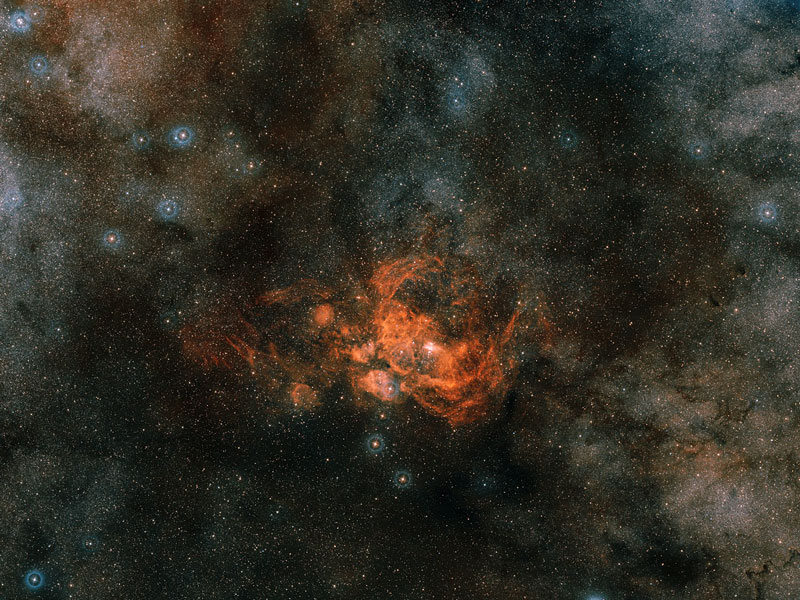
|
Credit: Davide De Martin
(ESA/Hubble), the
ESA/
ESO/
NASA,
Photoshop FITS Liberator &
Digitized Sky Survey 2
Explanation:
For reasons unknown, NGC 6357 is forming some of the most massive stars ever discovered.
Near the more obvious
Cat's Paw nebula, NGC 6357 houses the open star cluster
Pismis 24, home to these tremendously bright and blue
stars.
The overall red glow near the inner star forming region results from the
emission of
ionized
hydrogen gas.
The surrounding nebula,
shown above, holds a complex tapestry of gas,
dark dust, stars still forming, and newly born stars.
The intricate patterns are caused by complex interactions between
interstellar winds,
radiation pressures,
magnetic fields, and
gravity.
NGC 6357 spans about 400 light years and lies about 8,000
light years away toward the constellation of the
Scorpion.
APOD Editor to Discuss "Best of APOD
2006" Pictures in NYC on January 5
|
January February March April May June July August September October November December |
| ||||||||||||||||||||||||||||||||||||||||||||||||
NASA Web Site Statements, Warnings, and Disclaimers
NASA Official: Jay Norris. Specific rights apply.
A service of: LHEA at NASA / GSFC
& Michigan Tech. U.
Based on Astronomy Picture
Of the Day
Publications with keywords: open cluster - star formation
Publications with words: open cluster - star formation
See also:
